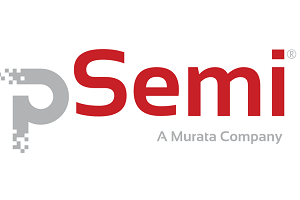pSemi launches 3.5 GHz dual-channel switch + LNA module with noise figure

pSemi Corporation, a Murata company skilled in the design and development of semiconductor integration, has announced two multi-chip modules featuring dual-channel switches, a PE53230 for 3.3–3.8 GHz and a PE53231 for 3.5–4.0 GHz. Each module contains two switches and two LNAs for high and low band frequencies. The new module portfolio delivers the low noise figure in the industry, at less than 1 dB, enabling receiver sensitivity and performance while handling 20W average input power enabling removal of external circuitry.
Built for applications across wireless infrastructure including TDD-LTE macro and micro cells, 5G massive MIMO systems and TDD-based communication systems, the new modules feature high gain and gain flatness. They can function as a failsafe with high-power signals coming in from Tx, while improving receiver channel sensitivity with low noise figures. Combining high linearity (IIP3) with low power consumption, the new modules are highly integrated solutions that do not require any external matching networks.
“We are proud to set the record with the lowest noise figure the industry has ever seen, delivering better receiver sensitivity and higher performance for our customers’ systems,” says Vikas Choudhary, vice president of global sales, marketing and system engineering, pSemi. “By providing MIMO architecture with the highest level of integration of receiver front end, we achieve high power handling, high linearity, and low noise-figure for 5G mMIMO active antenna systems helping advance the entire wireless ecosystem.”
Offered in a compact 6×6mm LGA package, the PE53230 and PE53231 products feature high gain of more than 36 dB and fast-switching time of less than 600 nanoseconds. With low power consumption of less than 500mW/channel, these integrated solutions in the industry with the high average input power handling at 20W.
Samples for the PE53230 and PE53231 are available now and are expected to be commercially available Q1 2024. For more information, please visit here and here, respectively.
Comment on this article below or via Twitter @IoTGN
